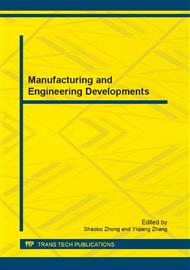p.805
p.810
p.815
p.820
p.826
p.831
p.835
p.840
p.845
The Study on 4-Link Fish Robot Model Optimization Based on Evolutionary Algorithm
Abstract:
In this paper, we consider a model of 4-link fish robot whose motion is carangiform type. This fish robot is developed by Intelligent Control and Mechatronics Lab, University of Ulsan, Korea. With this type of robot, we research about the combination of HCA and GA to find the optimal parameters to build the input functions for this fish robot. Then, these optimal parameters will make fish robot swim at the fastest velocity with respect to its dynamic system.
Info:
Periodical:
Pages:
835-839
Citation:
Online since:
January 2013
Authors:
Keywords:
Price:
Сopyright:
© 2013 Trans Tech Publications Ltd. All Rights Reserved
Share:
Citation:


